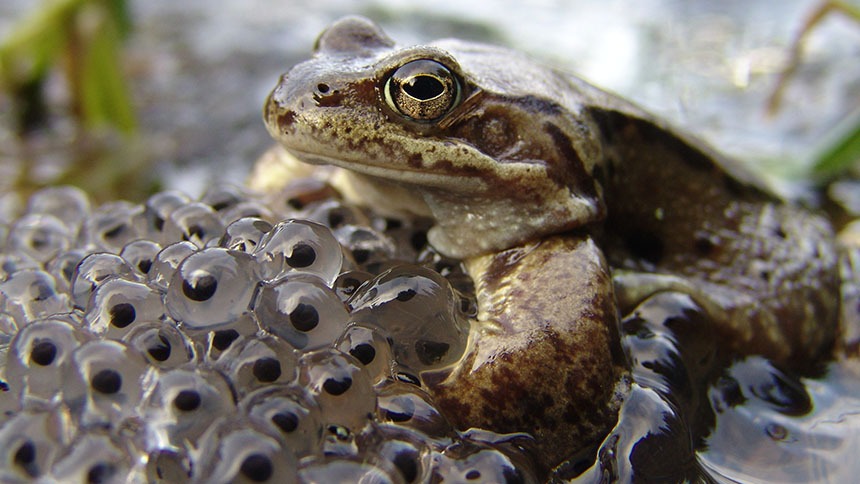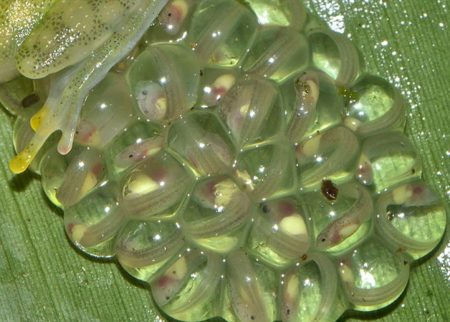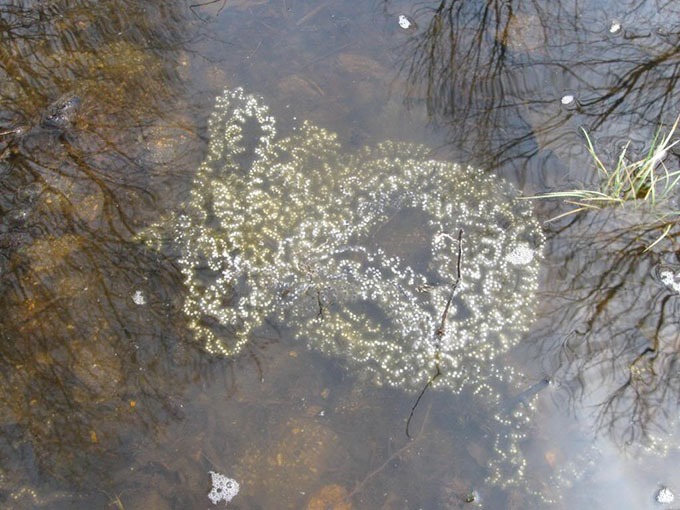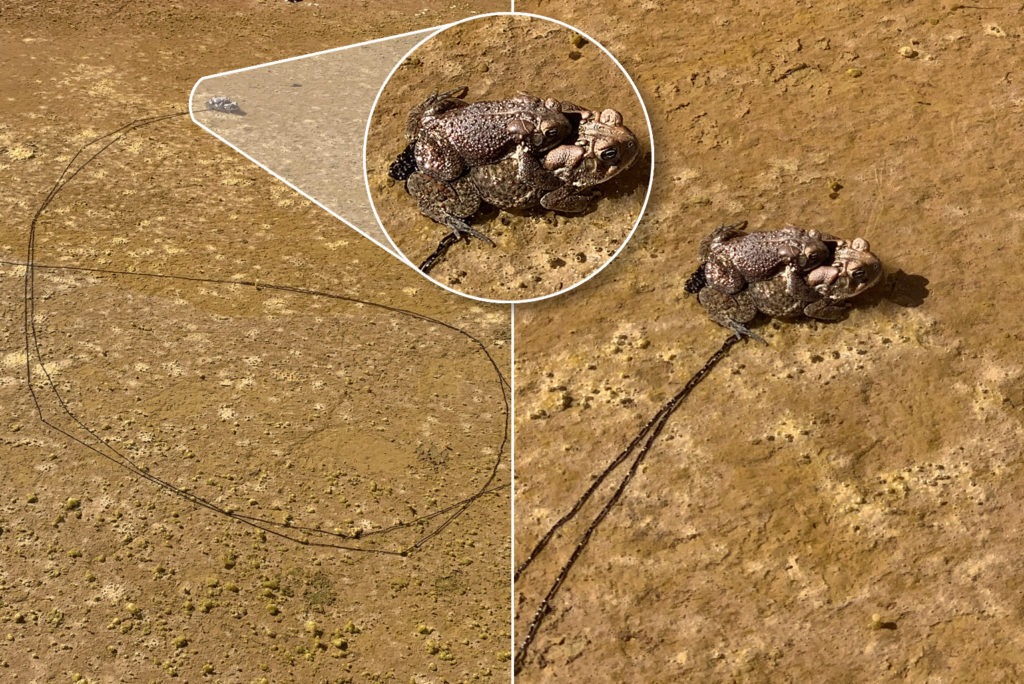
A Frog’s Clutch of Eggs: Numbers, Frequency, & Survival
The life cycle of a frog is fascinating – from egg to tadpole to adult, their life is full of changes. One of the most interesting parts is the sheer number of eggs they can lay.
Some species lay more than 10,000 eggs while others lay far less. Most frogs lay a “clutch” of eggs while some, mostly in the Bufonidae (True Toad) family, lay strings of eggs.
On this page, I’ll be answering three questions. First, we will look at the size of the clutch (the number of eggs). After that, I’ll explain how often frogs lay eggs, and finally, I’ll finish by talking about their survival rate.
So, let’s get started by learning about how many frogs lay in one season.
Page Contents
Clutch Size – The Number of Eggs
One of the most asked questions involving frogs and their offspring is “How many eggs do frogs lay?” Answering that question is complicated. The short answer is – thousands. The complex answer is – it depends on the species and health of the frog.

Some frogs lay tens of thousands of eggs while others lay only a few. Most frogs, both male, and female abandon their eggs shortly after mating. This is why they lay so many eggs – they have a low survival rate.
This doesn’t mean they don’t exercise precations or look out for their young. Quite the contrary, in fact. Amphibians carefully lay eggs in places that ensure their survival.
Some people go to great lengths to protect their eggs. Here are a few examples:
- Poison dart frogs carry their tadpoles into safe cups of water provided by bromeliads.
- Darwin’s Frogs carry tadpoles in their mouth.
- South American Pipa carry their young on their back.
There are more examples of caring Anurans (frogs and toads) but most species lay their eggs in a pool of water, streams, lakes, or ponds.
For now, let’s talk about quantities. Listed below are 8 different frogs and the average number of eggs they lay at a time.
| Species | Average Range |
|---|---|
| Cane Toad | 8,000 – 25,000 |
| Pacman Frog | 1,000 – 2,000 |
| North American Bullfrog | 12,000 – 20,000 |
| Poison-dart Frog | 2 – 12 |
| White’s Tree Frog | 100 – 1,000 |
| Tomato Frog | 1,000 – 1,500 |
| African Clawed Frog | 500 – 2,000 |
| Leopard Frog | 2,000 – 6,000 |
As you can see in the table above, the number of eggs varies between the species. Another thing to consider is that these are the average number of eggs per clutch. Some of these frogs lay multiple clutches per year while others lay eggs only once per year.
You can see a huge difference in the number of eggs based on the species; from only a few eggs to tens of thousands of eggs. Now that you’ve got a better understanding of the topic, let’s see how frequently frogs spawn.
Frequency – How often frogs lay eggs
Now that you have an idea of how many eggs frogs lay per clutch, let’s learn about how often they lay them. The mating season for amphibians is linked to the seasons of the year. First, I’ll quickly explain the mating season so you’ll know how much time is available for them in a given year.
The rainy season prompts breeding for frogs. This happens during the springtime. After several winter months of cool weather, less rainfall, and less food, the rainy season “sets the mood,” so to speak.

It’s a combination of things; higher temperatures, more water, and food. Spring brings warmer temperatures but it’s really the increased rain that gets things going. Rain creates puddles, refills ponds and creek beds, and gives the frogs plenty of places to lay their eggs.
A frog’s mating season lasts as long as the rainy season does. Now, in some parts of the world, you might find amphibians mating during the summer months, after heavy rain. This is why you hear frogs croaking after it rains – they’re looking for a mate.
So, most frogs have the opportunity to mate for several months each year. Some have more time than others – it depends on the climate. Then how often do the females lay a clutch of eggs?
The answer to that question is much like clutch size; it depends on the species. Some species lay a few eggs, multiple times per year. Others lay thousands at a time and only once or twice. Listed below are examples.
- Cane Toads: 1 – 2 times per year
- Poison-dart Frogs: 3 + times per year
Most frogs lay one to two clutches of eggs per year. Should a frog lay eggs two or more times per season, it will lay fewer eggs than it did the first time.
Each species is different, too. Poison-dart frogs, for example, lay eggs for a male to fertilize them. Eventually, the mother carries those fertilized eggs into the jungle canopy and places them in small pools of water within a bromeliad plant.
Once the eggs hatch and the little tadpoles are swimming around, the mother lays unfertilized eggs with each tadpole in order to feed them. This also passes along the toxins needed in order to make the tadpoles poisonous.
With that in mind, the poison-dart frog is laying eggs multiple times per year.
Survival – How many eggs survive
Last but not least is the survival rate of the eggs. Like the other sections, this all depends on the type of frog that lays the eggs. Most amphibians leave their eggs shortly after laying them. The defenseless eggs are left to fend for themselves.
Most eggs won’t survive but in large numbers, it ensures a few eggs will transition into tadpoles and eventually become full-grown, adult frogs.
I mentioned the poison-dart frog earlier because they have a unique life cycle. They lay a small number of eggs, usually between two and twelve at a time.
The reason for this is because both the mother and the father protect them from the time they’re eggs until

Poison dart frogs are just one example, too. Glass frogs are known to protect their offspring – a job that falls on the father. Male Darwin’s frogs actually swallow their offspring as eggs and keep them in their vocal sac until they’ve metamorphosed into little, jumping frogs.
These behaviors are interesting but they’re nothing in comparison to the Suriname toad; their means of protection is downright bizarre. Once the male Suriname toad fertilizes the eggs, he embeds them into their mother’s back.
The eggs remain there until they hatch into tadpoles (click here for interesting facts about tadpoles) and grow into young froglets!
Frequently Asked Questions
This section is meant to answer some of the most commonly asked questions regarding frogspawn.
It is the jelly coating that covers a single egg mass. The female frog (or toad) lays its eggs in a large clump of spawn, then stands over it and guards it against anything that might eat the eggs.
Frog eggs can be found in ponds and other bodies of water. It’s best to look in the early spring, when temperatures increase and the length of day increases, too.
Both frogs and toads are within the Anura order in scientific classification. Toads are technically a type of frog. As such, there are minor differences and it’s hard to say those differences are unique to a certain family. However, True toads tend to lay strings of eggs while other frog species lay clumps of eggs. This is a generalization and not true for all frogs.
TLDR; About Frogspawn
The number of eggs a frog lays depends on the species. Some of them lay a few while others lay tens of thousands. Likewise, the frequency on which they produce eggs depends. Some species breed multiple times per year while others just once.
Survival rates aren’t promising frogspawn. The majority of eggs won’t develop into adult frogs. Somewhere between larvae and maturity, most frogs fall victim to predators.

13 Comments
Do froglets and young frogs continue to stay in close physical contact, sharing the same location or, as they mature to they move to ‘greener ponds’ so to speak. Do frogs ever really rest on a Lilly pad?
I have an above ground pool and I had a leak in it so I drained it to about a foot and a half. Last week I heard a frog real loud beside the pool and another one off a ways. I left Friday to go to Alabama and came back yesterday, was going to put water in the pool and looked in and there were hundreds of tadpoles. Today I found a tree frog on our camper .The question is do I drain the water and tadpoles out or leave them?
Hey Marie! That’s exciting! Although I can understand your frustration if you’re looking to clean and use your pool soon. I would encourage you to let the tadpoles stay there until they reach the froglet stage and they’re able to climb out. You said you found a tree frog nearby so I’m hoping those little tadpoles are tree frogs (so they can climb out). Another option would be to get a net, scoop them into a buck with water from the pool, and transport them to a nearby pond or stream.
I have a patch of string frog eggs when do they hatch and how do I know how long they have been out for
It depends on the species that laid them and the temperature of the water can also determine the amount of time it takes for the eggs to hatch. Anyway, most frog/toad eggs (from species in the US) tend to hatch into tadpoles within 2 – 5 days.
Good day, we found a clutch in a ditch today, can they survive overnight temps in the 20s as long as the water doesn’t freeze? Thanks.
I woke to at least a thousand black dots in my swimming pool! Upon close observation and remembering at 5 am my little puppy chasing a frog into the pool, my hunch was frog eggs. After reading your informative writing I see I am correct. Just wondering if the chlorine will have any effect on the eggs?Also, if not all eggs are removed, is it safe for me & my pets to swim? Thanks!
Chlorine will have a negative effect on the eggs. If you’re able to move them to a natural source of water that would give them the best chance of survival and so long as you continue to chlorinate your pool’s water, you’re probably safe to swim in it.
do frogs or toads eat the tadpoles that hatch?
Some species of frogs have been known to eat tadpoles.
Very interesting I love little frogs
Very interesting subject learned a lot about toads❤️❤️❤️❤️
It is interesting for sure 🙂